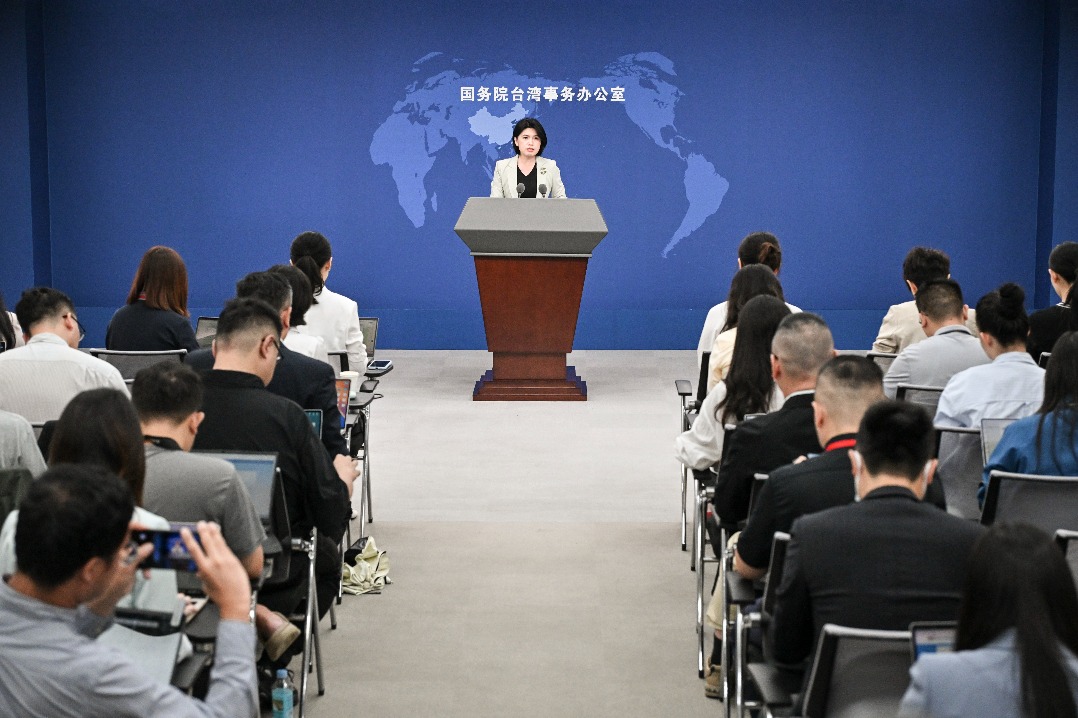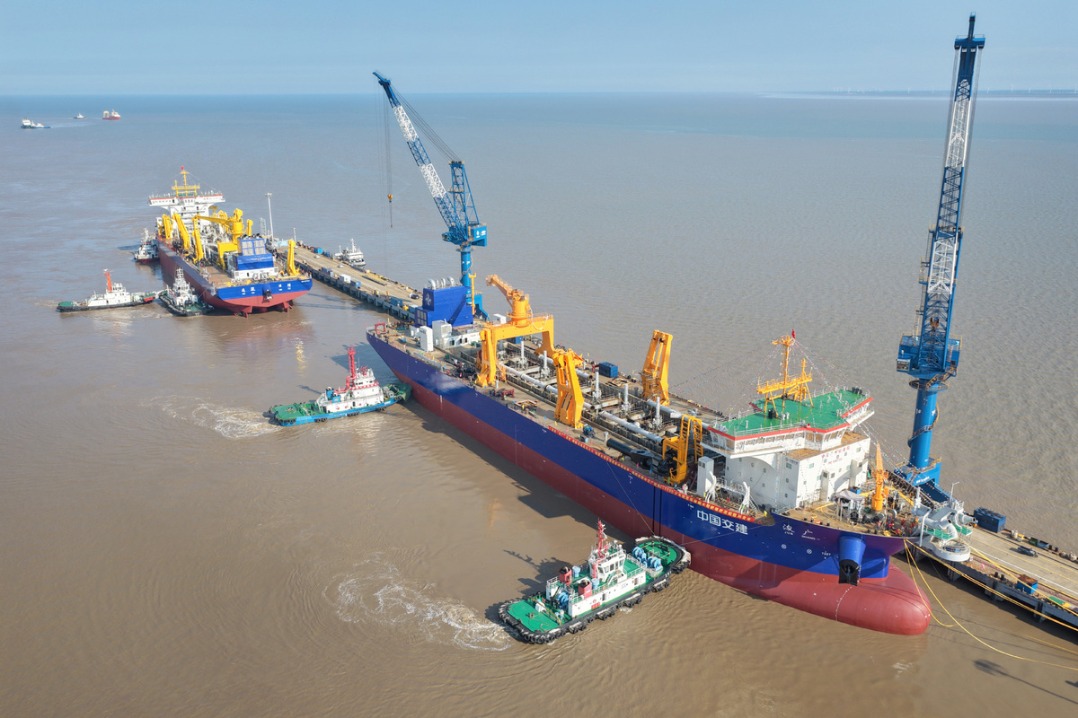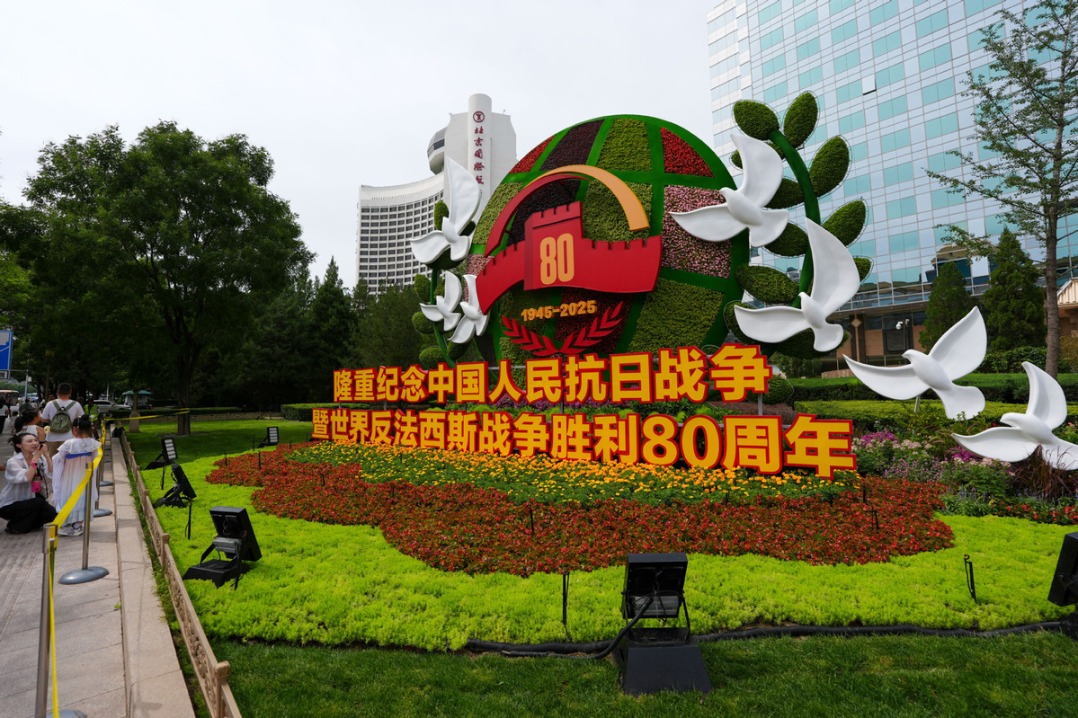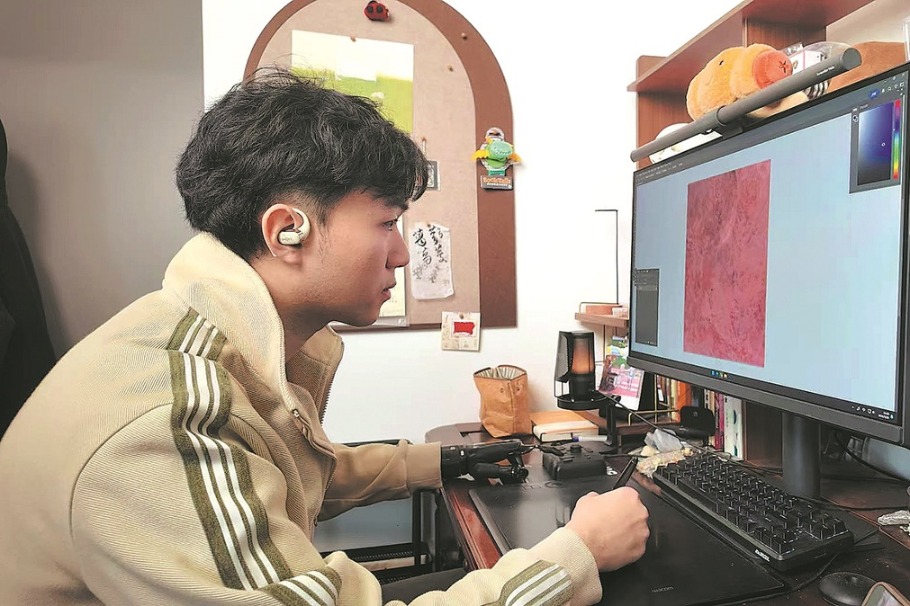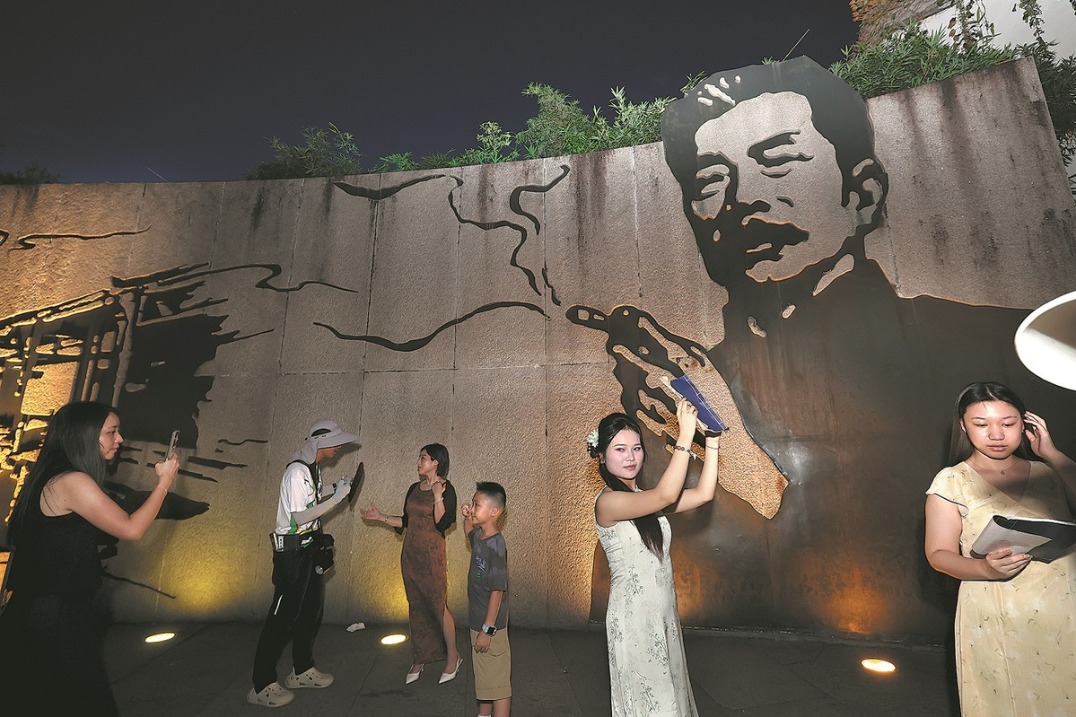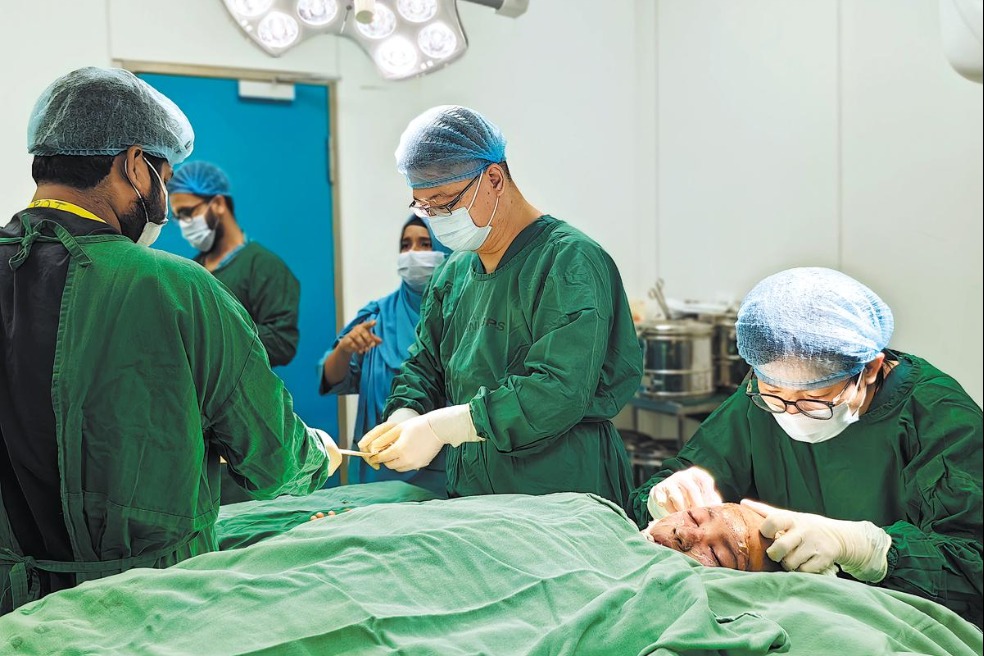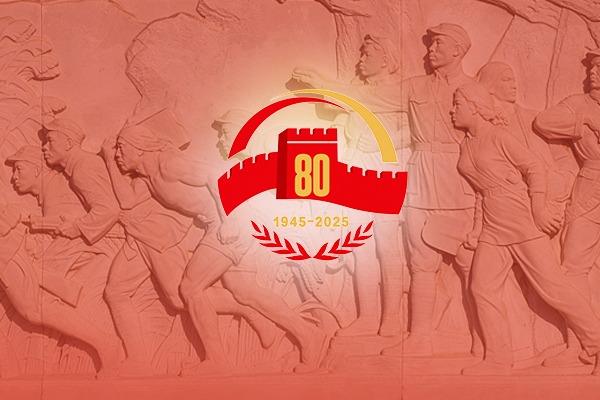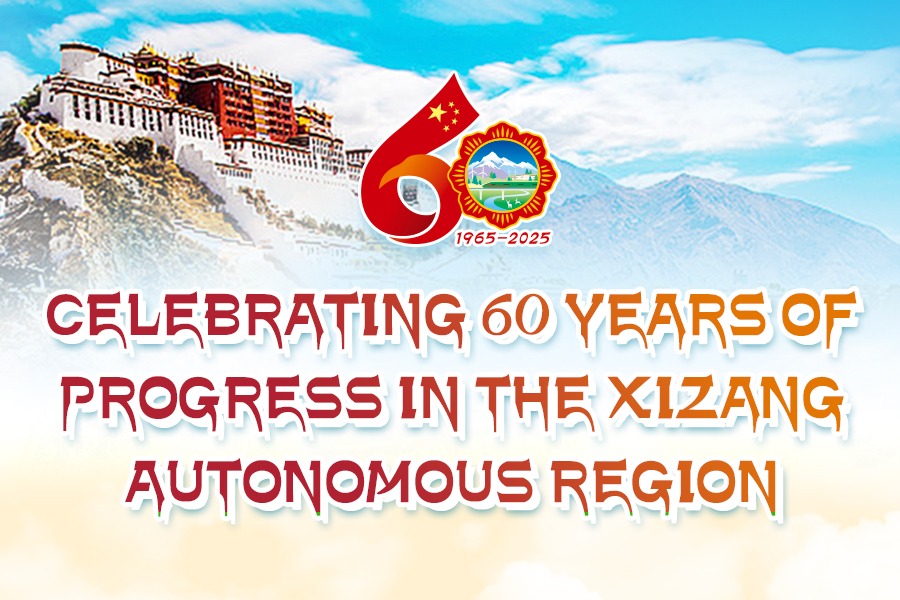Designs on the future

Hong Kong-based architect with a mission embraces the Belt and Road as key to his firm's corporate strategy
Nicholas Ho Lik-chi was only 27 years old when he took on the tough task more than three years ago to transform his Hong Kong-based architectural rm into an international business.
As the deputy managing director of Ho & Partners Architects Engineers & Development Consultants (HPA), Ho has already made major progress in his stated mission by securing large-scale projects in the Philippines and Malaysia.
He said the company's growth was driven by the opportunities offered by China's Belt and Road Initiative. Proposed by President Xi Jinping in 2013, the initiative aims to connect over 60 countries across the ancient Silk Road routes - including Southeast Asian countries - for closer economic and cultural cooperation.

Ho is not the conventional interlocutor of grand corporate plans. At 31 he is slight and soft-spoken, with rectangular glasses and a narrow chin beard. He wears a short-sleeved black T-shirt, exposing extensive tattoos that cover both his arms.
He is not shy about discussing his distinctive style. "This is how I usually look when I attend business meetings, even with government officials," Ho said.
The inked message on his right forearm declares, next to a sketching pencil: "Leave this world a little better than you found it." Encircling his entire left arm is a oral, gurative tattoo. And he gives his collar a tug to reveal the latest decoration on his upper chest, fresh from a tattoo shop in Taipei.
Initially, in 2013, when Ho took up this role at his family's architectural rm, suit and tie was his standard attire.
"I was young, hoping to prove myself," he recalled. "Now that I have proven it with my accomplishments, I prefer my down-to-earth style."
HPA was established in 1980 by Ho's father, Bosco Ho Hin-ngai, an architect of local repute. During the past four decades, the rm has completed architectural design for projects mostly in Hong Kong and Chinese mainland cities.
Some of the most recognizable works by HPA in Hong Kong include the Hong Kong Baptist University and the Liaison Office of the Central People's Government in the Hong Kong Special Administrative Region.
As tighter housing policies hit the Chinese mainland market, Ho was tasked three years ago with consolidating and expanding the rm's presence in Southeast Asia.
The young architect leaped at the chance offered by the Belt and Road to accomplish the rm's crucial goal of regional expansion.
Ho joined various Hong Kong business delegations to Southeast Asian countries and gained a fuller understanding of the opportunities the Belt and Road would bring his professional services rm.
"Hong Kong will be exporting its high-quality services and technologies in China's infrastructure projects under the initiative, while big Chinese mainland corporations will serve as the ignition key that unleashes the economic potential of the developing countries," Ho said.
The architectural rm decided to set up an office in Malaysia, as its overseas headquarters, with a specic focus on serving Belt and Road projects.

In the Malaysian capital, Kuala Lumpur, HPA has been involved in the master plan for the Taman TAR district, the facade and interior design for the Subang Avenue shopping mall, and the residential development of the Sungai Long district.
Earlier this year, the rm successfully won the bid to design the New Manila Bay International Community in the Philippine capital, Manila. Dubbed the City of Pearl, the project is a 407-hectare reclamation project, which will also be a high-tech commercial and tourism center.
A memorandum of understanding was signed by the Philippine Reclamation Authority and the project's Chinese investor, UAA Kinming Group Development Corp, in February. As one of the China-Philippine projects under the Belt and Road Initiative, it received the backing of Philippine President Rodrigo Duterte and the city government of Manila.
Governments' top-down support for Belt and Road projects is reassuring, Ho said.
"In our past efforts in the Southeast Asian market, our company had to work in isolation. But now with the Belt and Road Initiative, we can team up with governments and major developers in large-scale projects," he said.
Apart from the City of Pearl, HPA is also involved in the development of an industrial park and an office building in the Philippines.
HPA is an example of how professional firms from Hong Kong can benet from the Belt and Road Initiative, according to Ho.
The Southeast Asian markets, especially Thailand, Vietnam and Malaysia, have always had strong condence in Hong Kong's ability to offer professional services, he said.
"In a Belt and Road project, Hong Kong will serve as the conductor of the orchestra.
"We see ourselves as the chief planner and development consultant in a Belt and Road project, rather than merely a designer. We can also provide valuation services and a network of business partners to the local companies," he said.
HPA's projects in Belt and Road countries currently account for around 20 percent of its total revenue, according to Ho, and he aims to expand that to one-third, with the rest split evenly between its Hong Kong and Chinese mainland businesses.
As the company shifts its focus south, he hopes to repeat its success in Malaysia and the Philippines in other Southeast Asian markets.
Ho said Hong Kong will team up with the Chinese mainland in these overseas investment projects, and this will be "HPA's direction in the decades to come".
He sees this new direction as essential for the rm to remain competitive and sustainable. "I treat it as the (new corporate strategy) of the company established by my father," he said.
Ho recalled that he showed an interest in design at an early age in his obsession with Lego toys.
When he was around 6 years old, he started to "go to work" with his busy father, who would sometimes give him fun tasks to build models. At the age of 13, he would accompany his father on business trips.
Growing up, Ho eventually recognized his passion to become an architect, like his father. He headed to the United Kingdom to obtain a bachelor's degree and a diploma in architecture, where he also worked for some renowned names in the eld including the late Zaha Hadid.
Having learned from some of the world's most talented architects, Ho believes that the very best design would somehow integrate British architects' attention to detail, the Americans' innovation and audacity, and the Chinese application of traditional culture.
And yet, Ho's father remains his most important inspiration as an architect.
"My father always told me that a successful architecture rm is one-third design, one-third execution and one-third service," he said.
"After all, running an architecture rm is totally different from being an architecture designer."
iris@chinadailyhk.com
(HK Edition 09/11/2017 page7)
Today's Top News
- Tajikistan looks to China for deeper ties
- High-tech manufacturing lifts industrial profits
- Avenue blooms with flowers to mark victory
- Mainland slams DPP for distorting WWII history
- Northeast Asia trade in focus at Jilin expo
- Organic agriculture forum unites global experts in Datong
















